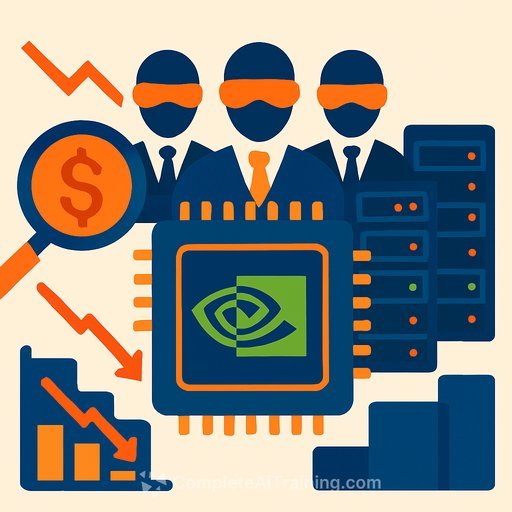Hon Hai's 11% Sales Bump Signals Strong AI Server Demand - Here's How Sales Teams Can Capitalize
Hon Hai Precision Industry (Foxconn), a major server partner for Nvidia, posted an 11% jump in quarterly sales. Revenue reached NT$2.06 trillion ($67.8 billion) for the quarter ending September, roughly in line with projections.
The takeaway: AI infrastructure is still pulling real budget, not just headlines. Suppliers across chips, networking, and server assembly are benefiting, even as some investors question whether valuations are running ahead of adoption.
Hon Hai remains tied to Apple for a sizable share of business, but iPhone-related sales have steadied. The company expects server revenue to more than double in the September quarter, supported by AI demand and its role in OpenAI's Stargate project with Oracle and SoftBank, a plan reportedly targeting about $400 billion across five new US data center sites.
There are threats in the background. Hon Hai cut full-year guidance earlier, calling out US-China trade tensions and shifting its manufacturing footprint away from China. A proposed 100% tariff on semiconductor imports-paired with exemptions for firms building in the US-adds urgency. Hon Hai is expanding AI server capacity in Wisconsin and Texas.
What This Means for Sales Leaders
- Budgets are flowing to AI infrastructure now. Expect active buying cycles for servers, networking, cooling, and data center services.
- US-based production is becoming a decision criterion. Domestic capacity can shorten lead times and reduce tariff exposure.
- Apple-related plateau means more attention on AI programs. Follow the budget shift.
- Short-term: server orders and add-on infrastructure. Mid-term: services, integration, and managed support.
Prospecting Targets
- OEMs and integrators building on Nvidia data center platforms.
- Data center developers and contractors scaling in the US, especially in Wisconsin and Texas.
- Enterprises moving from pilots to production for generative AI-look for GPU backlog, colocation expansions, and new rack commitments.
- Ecosystem partners tied to OpenAI, Oracle, and SoftBank efforts in the US.
Talk Tracks That Move Deals Forward
- Delivery certainty: "How critical are US-assembled options for your timeline and tariff exposure?"
- Total cost of ownership: "What's your plan for energy, cooling, and networking to keep per-inference cost under control?"
- Capacity planning: "What's your GPU allocation outlook for the next two quarters, and where are the bottlenecks?"
- Risk mitigation: "Do you have a dual-source plan across regions to protect lead times?"
- Compliance and incentives: "Are there tax credits or local incentives we should align to in WI/TX?"
Objections You'll Hear-and How to Handle Them
- "Valuations feel stretched." Tie proposals to measurable outcomes: throughput, energy cost per token, and time-to-deploy.
- "Tariffs are uncertain." Offer US-assembled options, staged deliveries, and pricing protections where possible.
- "We're waiting on GPUs." Pre-book rack, power, and networking so the site is ready the moment accelerators land.
- "Budget is tight." Break deals into phases: core compute first, then scale networking and storage as usage ramps.
Action Plan for This Quarter
- Prioritize accounts with near-term AI deployment milestones; map them to US capacity for faster delivery.
- Bundle offers: servers + cooling + networking + deployment services. Remove friction and compress timelines.
- Run an executive briefing on tariff risk, supply options, and ROI levers; secure pre-commit capacity slots.
- Create a short, numbers-first business case template your reps can customize in under 30 minutes.
If your sales team needs a faster way to speak the same language as AI buyers, explore curated training by role at Complete AI Training.
Your membership also unlocks:






